Rajasthan – Culture and Tradition
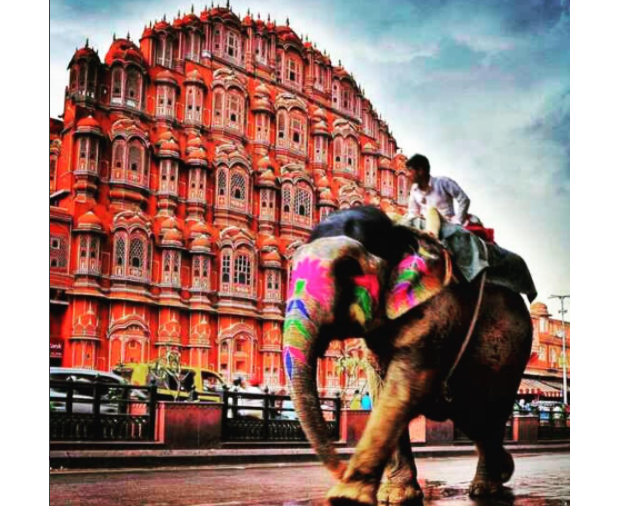
Rajasthan literally means a Land of Kingdoms and the dominant population of Rajasthan is Rajputs which means Son of a king.
Rajasthan is a land full of deserts and forts. The northwestern portion of Rajasthan is generally sandy and dry. Most of this region is covered by the Thar Desert (also known as the “Rajasthan Desert” and “Great Indian Desert“).
Rajasthan culture reflects its splendid colorful history, that doesn’t go with its name of ‘the land of Kings’ or ‘the country of Rajputs’, Its culture is vibrant with yummy cuisines, beautiful dances, and mesmerizing music.
It is known for its royal grandeur and royalties and its varied folk culture from villages is often depicted as symbolic of the state which attracts tourists from all over the world. It is also rich in its flora and fauna with some of the popular wildlife sanctuaries & national parks.
History

Rajasthan, the land of Kings, has royal grandeur and a glorious history; it is a charming and captivating state of India. It is known for many brave kings, their deeds; and their interest in art and architecture. Its name means “the land of the rajas”. It was also called Rajputana (the country of the Rajputs); whose codes of chivalry shaped social mores just as their often bitter and protracted feuding dominated their politics.
The first mention of the word Rajasthan comes from the works of George Thomas and James Tod. However, western Rajasthan with eastern Gujarat was part of “Gurjaratra” or Gurjarabhumi, the land of Gurjars. The local dialects of the time use the expression Rājwār, the place or land of kings, later corrupted by the British to Rajputana.
The history of Rajasthan goes back as far as Indus Valley Civilization, the foundation of the Rajasthani community took shape with the rise of Western Middle Kingdoms such as Western Kshatrapas, who were the successors to the Indo-Scythians who invaded the area of Ujjain and established the Saka era.
Saka calendar (also been adopted as the Indian national calendar) is used by the Rajasthani community and adjoining areas such as Punjab and Haryana. With time their social structures got stronger reorganizations giving birth to several martial sub-ethnic groups (previously called a Martial race but now obsolete term). Rajasthanis emerged as major merchants during medieval India. Rajasthan was among the important centers of trade with Rome, the eastern Mediterranean, and Southeast Asia.
Rajasthani Tradition
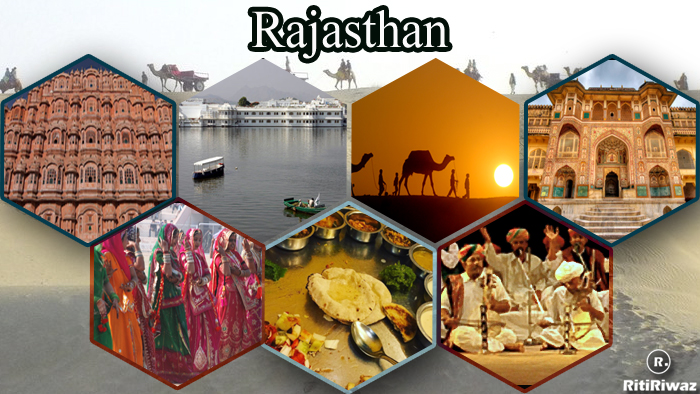
Rajasthan has cultural traditions that reflect the ancient Indian way of life. Rajasthani society is a blend of predominantly Hindus with sizable minorities of Muslims and Jains. Jats are mostly Hindus and Sikhs. Meenas of Rajasthan to date strongly follow Vedic culture which usually includes worship of Bhainroon (Shiva) and Krishna as well as the Durga.
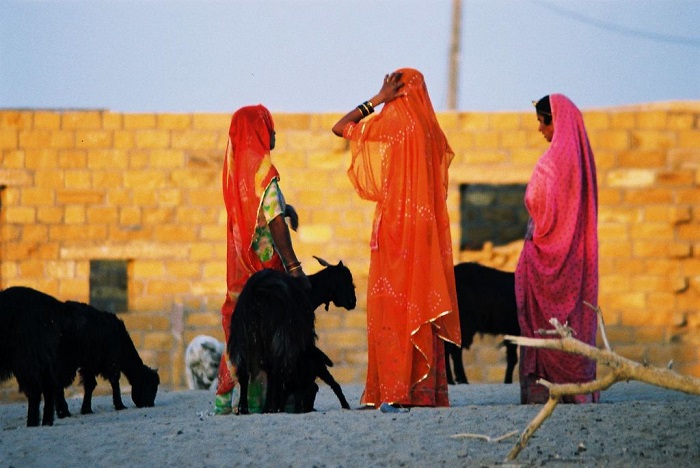
Rajasthani Wedding Traditions have their own distinct individual rituals of marriage. Marriage is considered one of the most important events in a couple’s life. The traditional dance, music, gorgeous wedding attires, jewelry, wedding rituals are mesmerizing for any spectator. Mostly Rajasthani speaks the Marwari language, as it is their native language.
Rajasthani Costume
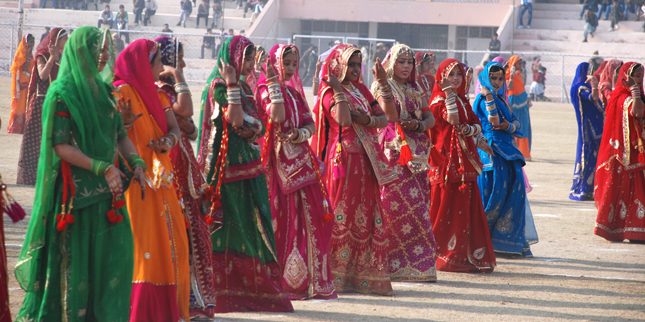
Traditionally men wear dhotis, kurta, angarkha, and paggar or safa (kind of turban headgear). Traditional Chudidar payjama (puckered trousers) frequently replaces dhoti in different regions. Women wear ghagra (long skirt) and kanchli (top). However, dress style changes with the lengths and breaths of vast Rajasthan. Dhoti is worn in different ways in Marwar (Jodhpur area) or Shekhawati (Jaipur area) or Hadoti (Bundi area). Similarly, there are a few differences between pagri and safa despite both being Rajasthani headgear. Mewar has the tradition of paggar, whereas Marwar has the tradition of safa.
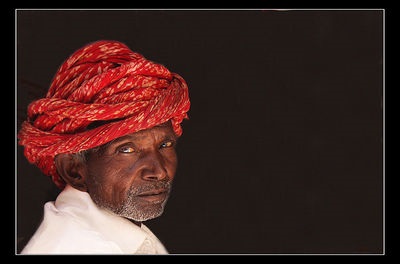
Rajasthan is also famous for its amazing ornaments. From ancient times, Rajasthani people have been wearing jewelry of various metals and materials. Traditionally, women wore Gems-studded gold and silver ornaments. Historically, silver or gold ornaments were used for interior decoration stitched on curtains, seat cushions, handy-crafts, etc. Wealthy Rajasthanis used Gems-studded gold and silver on swords, shields, knives, pistols, cannon, doors, thrones, etc., which reflects the importance of ornaments in the lives of Rajasthanis.
Rajasthani Cuisines
Rajasthani cooking was influenced by both the war-like lifestyles of its inhabitants and the availability of ingredients in this arid region. Food that could last for several days and could be eaten without heating was preferred. The scarcity of water and fresh green vegetables have all had their effect on cooking.
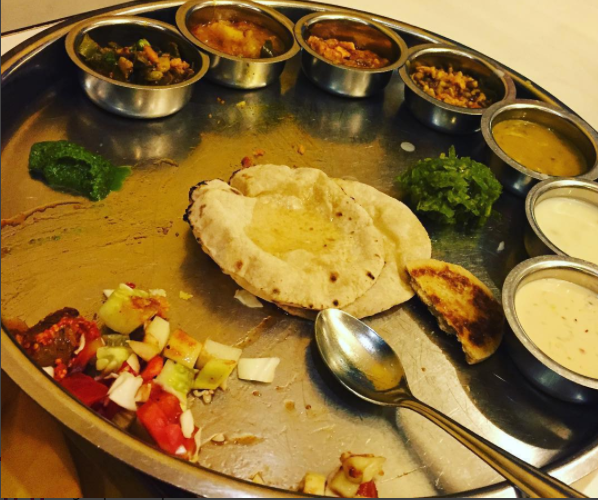
Famous dishes which Rajasthan is known for are Dal-Bati-Churma, Bikaneri Bhuji, bajre ki roti (millet bread) and lashun ki chutney (hot garlic paste), mawa kachori Mirchi Bada, Pyaaj Kachori and ghevar from Jodhpur, Alwar ka Mawa(Milk Cake), malpauas from Pushkar and rassgollas from Bikaner.
Rajasthani Music and Dance
The Ghoomar dance from Jodhpur Marwar and Kalbeliya dance of Jaisalmer have gained international recognition. Folk music is a large part of the Rajasthani culture. Kathputli, Bhopa, Chang, Teratali, Ghindr, Kachchhighori, and Tejaji are examples of traditional Rajasthani culture.
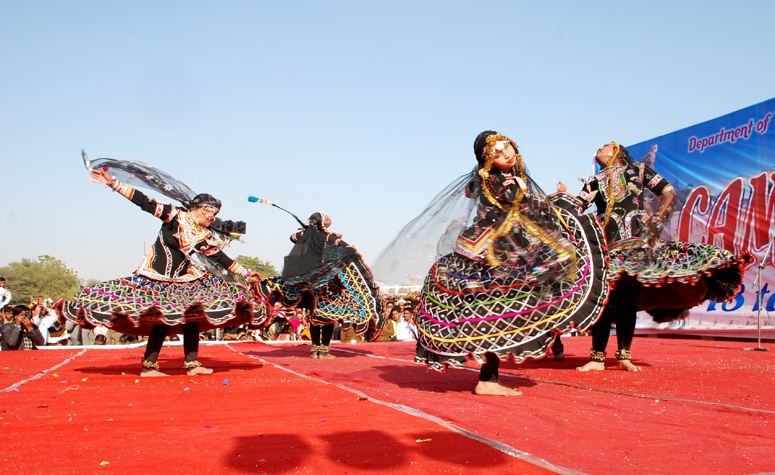
The Ghoomer dance is performed on various auspicious occasions like fairs & festivals. It is called `Ghoomer`, from the `ghoomna` of Ghaghra i.e. the flowing of Ghaghra, a long skirt of the Rajasthani women. There is an amazing grace as the skirt flair slowly while the women folk twirl in circles, their faces covered with the help of the veil. The performers in Ghoomar dance sway their colorful ghagras that are rich in embroidery work and it is also embellished with mirror-work. They are dressed in the traditional ghaghra and choli with chunaris. They deck up in traditional silver jewelry and glass bangles. The Ghoomar is performed during women’s gatherings like the ritual of haldi during a wedding, or to entertain a queen in her personal quarters, etc.

Folk songs are commonly ballads that relate heroic deeds and love stories; and religious or devotional songs known as bhajans and banis which are often accompanied by musical instruments like dholak, sitar, and sarangi are also sung.
Rajasthani Art and craft
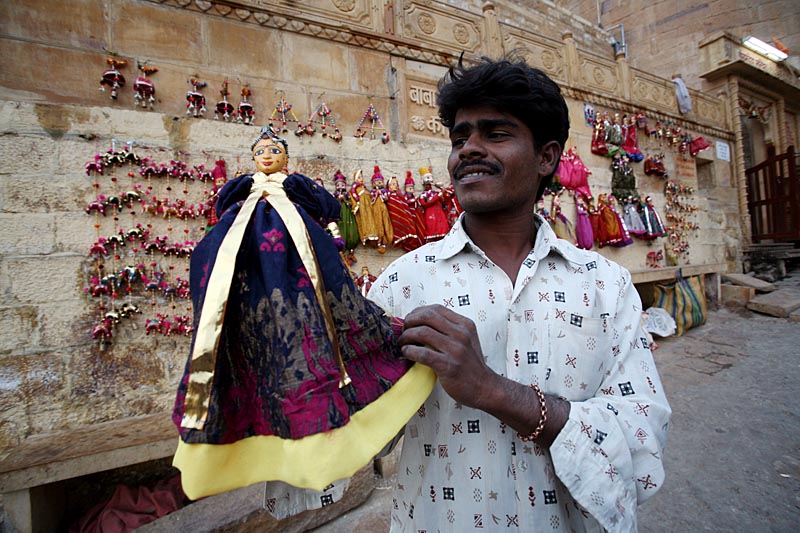
Rajasthan is known for its traditional, colorful art. The block prints, tie and dye prints, Bagaru prints, Sanganer prints, and Zari embroidery are major export products from Rajasthan. Handicraft items like wooden furniture and crafts, carpets, and blue pottery are commonly found here. Shopping reflects the colorful culture, Rajasthani clothes have a lot of mirror work and embroidery.
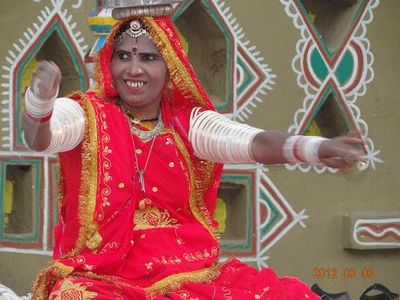
A Rajasthani traditional dress for females comprises an ankle-length skirt and a short top, also known as a lehenga or a chaniya choli. A piece of cloth is used to cover the head, both for protection from heat and maintenance of modesty. Rajasthani dresses are usually designed in bright colors like blue, yellow, and orange.
Famous tourist attractions
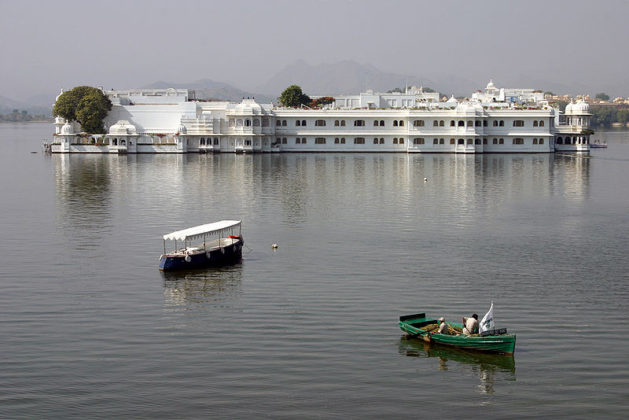
Rajasthan is one of the most popular tourist destinations in India, because of its historical forts, palaces, art, and culture. The palaces of Jaipur, lakes of Udaipur, and desert forts of Jodhpur, Bikaner & Jaisalmer are among the most preferred destinations of many tourists, Indian and foreign.
The best flavor of this rich artistic talent can be savored during various fairs & festivals of the state, especially during the Desert Festivals (Jan-Feb), the Pushkar Fair (Oct-Nov), the Marwar Festival (Sept-Oct), and the Camel Festival (Jan-Feb).






